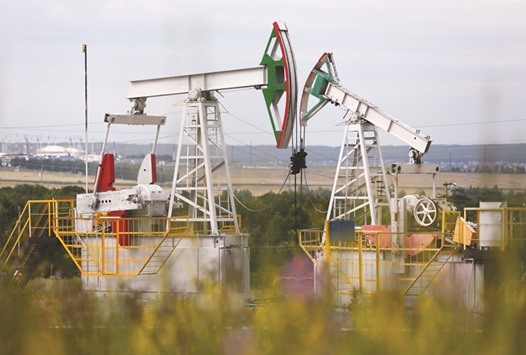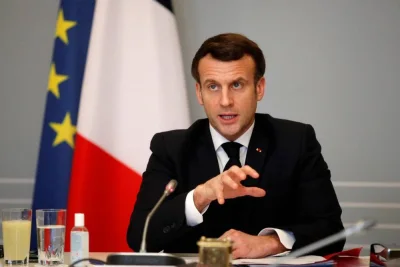Russia’s deficit goal is in jeopardy this year after crude resumed its selloff, leaving the government few options to stabilise public finances, according to Moody’s Investors Service.
“The new fall in oil prices poses significant difficulties for achieving the targeted 3% federal deficit,” Kristin Lindow, senior vice president at the credit-ratings company, said in e-mailed comments. The fiscal goal “reflects the government’s limited financing options after using almost half of its accumulated savings in the Reserve Fund last year and the constraints posed by international sanctions.”
Taking stock of the budget, hobbled by oil’s collapse to the lowest in more than 12 years, Russia is already extending an austerity drive that’s without precedent during President Vladimir Putin’s 16 years in power. The Reserve Fund, one of the nation’s two sovereign wealth coffers, shrank almost by half since its 2014 high, and authorities risk depleting it by the end of the year, according to Finance Minister Anton Siluanov.
Russia, which gets almost half its budget revenue from oil and gas, is on track for its second year of recession, leaving the government to straddle the line between offering some relief to the economy without further compromising its finances. While Putin had signed into law a 2016 budget based on an average oil price of $50 a barrel and the deficit at 3% of gross domestic product, the Finance Ministry is considering different scenarios for this year.
“Identifying additional savings on the spending side will be difficult,” Lindow said. “Significant expenditure-side adjustments, i.e. freezing wages and only partially indexing pensions, were already taken in the 2016 budget.”
Moody’s and Standard & Poor’s cut Russia below investment grade last year following a drop in oil prices and sanctions imposed over the conflict in Ukraine. Fitch Ratings is the last major assessor that ranks the country above junk.
The rouble sank to its lowest level in almost three weeks on Thursday in Moscow and government bonds fell as Brent crude retreated below $30. The RTS stock index lost 3.6%.
Budget measures totalling 1.5tn roubles ($19bn) are needed to avoid a shortfall of more than 6% of gross domestic product this year, according to Siluanov. That includes spending cuts of 10%, or 500bn roubles, he said January 13.
The fiscal rigour is an about-face for Putin, who as prime minister in 2009-2010 deployed what Goldman Sachs Group estimated to be the largest stimulus package among Group of 20 nations, which amounted to 9.8% of economic output. Heaping pressure on budget policy is a parliamentary election later this year and a presidential ballot in 2018.
The Economy Ministry is proposing 828bn roubles of anti-crisis measures, and although the draft plan assigns funding for most of the spending, the government still has to find sources of financing for at least 134bn roubles.
If oil stays at $30 this year, Russia will lose as much as 2.5tn roubles in revenue and the budget hole will exceed 3%, according to Siluanov. The Finance Ministry wants to keep this year’s fiscal gap to 3% at an average oil price of $40 a barrel after running a 2.6% deficit in 2015, the widest since 2010.
Russia needs oil at $82 to balance its budget, almost three times the current price of crude, the finance minister has said. The break-even price for last year was $73.10 and is set to drop to $66.10 in 2016, Deutsche Bank estimated last month. While still higher than for the United Arab Emirates or Qatar, that would be the lowest for Russia since 2008, according to the German lender.
With the budget buckling in the face of low prices, the draft anti-crisis plan by the Economy Ministry proposed the sale of Russia’s largest state-owned companies. The government also said last week that it invited banks from nine countries to submit proposals to broker its return to foreign capital markets, its first mandate since last issuing international bonds in September 2013.
“Revenue measures being considered, if any, have not yet been made public,” Lindow said. “As a consequence, financing options such as privatisation and external borrowing have been proposed that were previously rejected in order not to deplete the Reserve Fund as early as this year.”

Oil pumping units are seen on an oilfield operated by Tatneft near Almetyevsk, Russia. Moscow, which gets almost half its budget revenue from oil and gas, is on track for its second year of recession, leaving the government to straddle the line between offering some relief to the economy without further compromising its finances.


